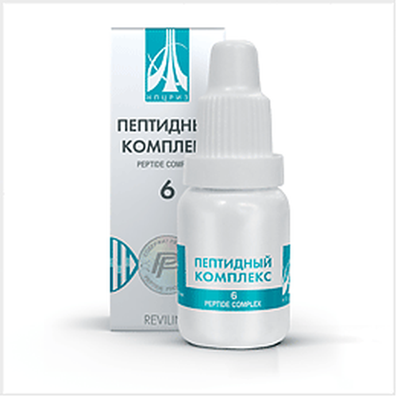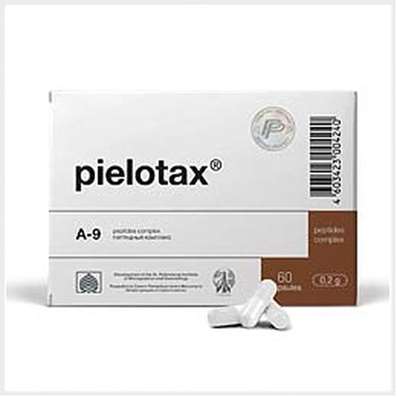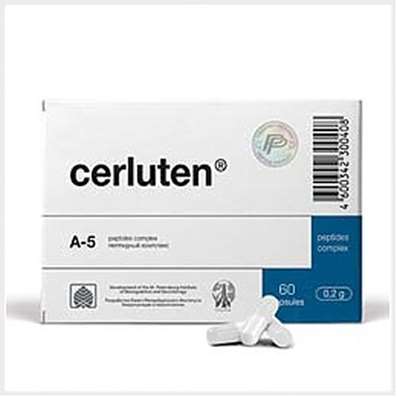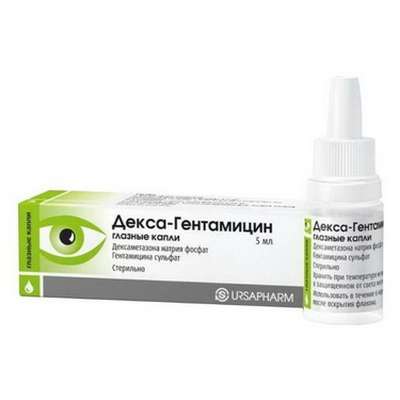Instruction for use: Cortineff
I want this, give me price
Active substance Fludrocortisone
ATX code H02AA02 Fludrocortisone
Pharmacological group
Mineralocorticoidoid [Mineralocorticosteroids]
Nosological classification (ICD-10)
E25 Adrenogenital disorders
Macroghenytozomy in boys, Adrenogenital syndrome, Decreased function of the sex glands, Congenital dysfunction of the adrenal cortex, Apera-Halle Syndrome, Crook-Apera-Halle Syndrome
E27.1 Primary insufficiency of the adrenal cortex
Addison's Disease, Addisonism, Adrenocortical insufficiency, Hypofunction of the adrenal cortex, Collapse with Addison's Disease, Insufficiency of the adrenal cortex primary, Primary adrenocortical insufficiency, Primary adrenal insufficiency
E27.4 Other and unspecified adrenocortical insufficiency
Hypocorticism, Hypoaldosteronism, Adrenal insufficiency, Insufficiency of the adrenal cortex, Insufficiency of the adrenal cortex, Secondary adrenocortical insufficiency, Secondary adrenal insufficiency, Secondary insufficiency of the adrenal cortex, Temporary decrease in the function of the adrenal cortex, Dysfunction of the adrenal cortex
E86 Decreased fluid volume [hypovolaemia]
Water deficit compensation, Indemnification of isotonic deficiency of water, Compensation for isotonic sodium deficiency, Compensation BCC, Replenishment of water deficit with stored KShS, Replenishment of fluid volume, Replenishment of BCC, Replenishment of electrolytes with stored KHS, Hypovolemic condition, Hypovolemia, Hypotonic form of hypohydration, Hypochloremia with dehydration, Dehydration of different origin, Dehydration in children, Replacing the volume of plasma with blood loss in pediatrics, Replacing the plasma with its losses and burns, Isotonic dehydration, Isotonic form of hypohydration, Violation of the water-salt balance, Dehydration, Dehydration in acute intestinal infections, Acute hypovolemia, Loss of fluid during burns, Toxicosis with exsycosis
I95 Hypotension
hypotension, Age hypotension, arterial Hypertension, Hypotonic disease, hypotonic reaction, postural hypotension, Symptomatic hypotension, Essential hypotension
Composition
Tablets 1 table.
active substance:
Fludrocortisone acetate 0.1 mg
Excipients: lactose; potato starch; gelatin; Magnesium stearate
Description of dosage form
White with a creamy shade of color, round shaped tablet, chamfered, with flat surfaces, with a squashed letter "F" - on one side and with a notch for the fault - on the other side.
pharmachologic effect
Pharmacological action - glucocorticoid, mineralocorticoid.
Pharmacodynamics
It is a synthetic hormone of the adrenal cortex, a fluorinated derivative of hydrocortisone, which has a high mineralocorticoid activity.
Has a 100 times more potent mineralocorticoid action, and 10-15 times more powerful anti-inflammatory effect than hydrocortisone.
Strengthens the inverse absorption of sodium and water in the renal tubules, and also increases the release of potassium and hydrogen ions.
An increase in the volume of extracellular fluid and sodium retention lead to an increase in blood pressure.
In doses exceeding therapeutic, can inhibit the activity of the adrenal cortex, thymus gland and secretion of ACTH by the pituitary gland. May increase the deposition of glycogen in the liver, and if the protein intake is insufficient with food - lead to a negative nitrogen balance.
Indication
Primary adrenocortical insufficiency (Addison's disease, condition after complete adrenalectomy);
Secondary insufficiency of the adrenal cortex;
Adrenogenital syndrome (congenital adrenal hyperplasia);
Hypovolemia and arterial hypotension of various genesis.
Contraindications
Hypersensitivity to fludrocortisone or other components of the drug;
Systemic fungal infections.
With caution: nonspecific ulcerative colitis, diverticulosis of the intestine, peptic ulcer or duodenal ulcer, acute or latent peptic ulcer, newly created intestinal anastomosis, esophagitis, gastritis, history of gastrointestinal surgery, impaired liver function, renal failure, arterial hypertension, osteoporosis, Myasthenia gravis, hypoalbuminemia and conditions predisposing to its occurrence, hyperlipidemia; Diabetes mellitus (including a violation of carbohydrate tolerance), hypothyroidism, Itenko-Cushing's disease, thyrotoxicosis, obesity (grade III-IV), acute psychosis and mental disorders, poliomyelitis (except for the form of bulbar encephalitis); Patients with cardiovascular diseases, incl. After a recent myocardial infarction (in patients with acute and subacute myocardial infarction it is possible to spread the focus of necrosis, slow the formation of scar tissue and, as a result, break the heart muscle), decompensated chronic heart failure; Parasitic and infectious diseases of bacterial nature (currently or recently transferred, including contact with the patient) - herpes simplex, herpes zoster (viremic phase), chicken pox, measles, amebiasis, strongyloidiasis (established or suspected); Active and latent tuberculosis; Severe infectious diseases (permissible only against specific therapy); Treatment of patients in the post-vaccination period (a period of 8 weeks before and 2 weeks after vaccination), lymphadenitis after BCG vaccination; Patients with HIV infection and AIDS (decision on the use of corticosteroids should be taken after careful consideration of the benefit and risk to the patient).
pregnancy and breastfeeding
Acceptance of corticosteroids by women of childbearing age and pregnant women is allowed only if their potential benefit to the mother exceeds the potential risk to the fetus. If the adrenal cortex is deficient, Cortineff's intake during pregnancy should be continued, and the dose may increase.
If it is necessary to use the drug during breastfeeding, it is recommended to stop breastfeeding.
Side effects
The main undesirable effects include: arterial hypertension, peripheral edema, left ventricular hypertrophy of the heart, circulatory insufficiency, hypernatremia, hypocalcemia.
When applying Cortineff for a long time or applying it simultaneously with other corticosteroids, the following side effects are possible.
From the musculoskeletal system: muscle weakness, steroid myopathy (more common in women, usually begins with the pelvic floor muscles and extends to the proximal muscles of the hands, rarely affects the respiratory muscles), loss of muscle mass, muscle tendon rupture, osteoporosis, compression fracture Spine, aseptic necrosis of femoral and humerus head, pathological fractures of long tubular bones.
From the SSS (cardiovascular system): arrhythmias, bradycardia (up to cardiac arrest), ECG changes, characteristic of hypokalemia, hypercoagulation, thrombosis, obliterating endarteritis; In patients with acute and subacute myocardial infarction - the spread of the focus of necrosis, slowing the formation of scar tissue, which can lead to rupture of the heart muscle.
On the part of the digestive system: steroid ulcer with possible perforation and bleeding, pancreatitis, flatulence, ulcerative esophagitis, digestive disorders, nausea, increased or decreased appetite, vomiting, hiccough; In rare cases - increased activity of hepatic transaminases and alkaline phosphatase (alkaline phosphatase).
On the part of the skin and mucous membranes: atrophic bands, acne, delayed wound healing, thinning of the skin, petechia and hematoma, erythema, excessive sweating, allergic dermatitis, urticaria, angioedema, ecchymosis, hyper- or hypopigmentation, propensity to develop pyoderma and candidiasis
From the nervous system: increased ICP (intracranial pressure) with the syndrome of the congestive nipple of the optic nerve (pseudotumor of the brain - most often in children, usually after too rapid reduction of the dose, symptoms - headache, decreased visual acuity or double vision), convulsions, dizziness , Headache, sleep disturbances.
Endocrine status: secondary adrenal and hypothalamic-pituitary insufficiency (especially in stressful situations such as illness, trauma, surgery), Cushing's syndrome, growth inhibition in children, menstrual irregularities, decreased carbohydrate tolerance, manifestation of latent diabetes mellitus and increased need In insulin or oral hypoglycemic agents, hirsutism.
From the sense organs: posterior subcapsular cataract (usually occurs after discontinuation of treatment, but may require surgical treatment), increased intraocular pressure, glaucoma (usually after treatment for at least a year), exophthalmos, a tendency to develop secondary bacterial, fungal or viral infections Eye, trophic changes of the cornea.
Mental disorders: most often appear within the first 2 weeks of treatment, symptoms can mimic schizophrenia, mania or delirious syndrome (women are most susceptible).
From the side of metabolism: negative nitrogen balance due to protein catabolism, hyperglycemia, glucosuria, increased excretion of Ca2 +, hypocalcemia; Conditioned by mineralocorticoid activity - hypernatremia, hypokalemic syndrome (hypokalemia, arrhythmia, myalgia or muscle spasm, unusual weakness and fatigue).
Other: anaphylactic reactions, weight gain, disguise of symptoms of infectious diseases, syncope, development or exacerbation of infections (this side effect is promoted by jointly used immunosuppressants and vaccination), leukocyturia, withdrawal syndrome.
Interaction
Cardiac glycosides: increased risk of heart rhythm disorders and glycosides toxicity associated with hypokalemia
Barbiturates, antiepileptic drugs (phenytoin, carbamazepine), rifampicin, glutetimide: accelerate the metabolism of corticosteroids (by induction of microsomal enzymes), weaken their action.
Antihistamines weaken the action of Cortineff.
Amphotericin B, inhibitors of carbonic anhydrase: hypokalemia, left ventricular hypertrophy of the heart, circulatory insufficiency.
Anabolic steroids, androgens: increased risk of peripheral edema, acne (use cautiously, especially in diseases of the liver and heart).
Oral contraceptive preparations containing estrogens: increasing the concentration of globulins binding corticosteroids in the blood serum, slowing metabolism, increasing the duration of T1 / 2, enhancing the effect of Cortineff.
Anticoagulants (coumarin derivatives, indanedione, heparin), streptokinase, urokinase: decrease, and in some patients - increased efficacy, the dose should be determined on the basis of PV, increased risk of ulceration and bleeding from the gastrointestinal tract.
Tricyclic antidepressants can enhance mental disorders associated with the administration of Cortineff (should not be assigned to treat these disorders).
Oral hypoglycemic drugs, insulin: weakening of hypoglycemic action, increase in the concentration of glucose in the blood (it is possible to correct the dose of hypoglycemic drugs).
Diuretics: weakening the action of diuretics (potassium-sparing), hypokalemia.
Laxatives: weakening of action, hypokalemia.
Ephedrine can accelerate the metabolism of corticosteroids (dosage correction of Cortineff is possible).
Immunosuppressive drugs: increased risk of infection, lymphoma and other lymphoproliferative diseases.
Drugs that block neuromuscular conduction (depolarizing muscle relaxants): hypocalcemia associated with the use of Cortineff, can enhance the blockade of synapses, leading to an increase in the duration of the neuromuscular blockade.
NSAIDs (non-steroidal anti-inflammatory drugs), incl. Acetylsalicylic acid: weakened action, increased risk of ulcers and bleeding from the digestive tract (gastrointestinal tract).
Drugs and food containing sodium: peripheral edema, arterial hypertension (it may be necessary to limit the intake of sodium from food and drugs with a high sodium content, but sometimes the use of corticosteroids requires additional sodium administration).
Vaccines containing live viruses: during the use of immunosuppressive doses of corticosteroids, virus replication (development of viral diseases) and a decrease in antibody production (simultaneous use is not recommended) is possible.
Other vaccines: increased risk of neurological complications and decreased production of antibodies.
Dosing and Administration
Inside, in the morning after eating, washing down with a lot of liquid. The dose is set individually depending on the indications, the effectiveness of therapy and the patient's condition. In the process of treatment with a change in the clinical picture or in stressful situations (surgical intervention, trauma, infection), dose adjustment may be necessary.
Adults with substitution therapy - from 100 mcg 3 times a week to 200 mcg / day.
Children with adrenogenital syndrome - in an initial dose of 300 mcg / day, then for several months the dose is reduced to 50-100 mcg / day.
Supportive dose: infants - 100-200 mcg / day, children older than 1 year - 50-100 mcg / day.
When administering large doses, it is recommended to take 2/3 of the dose in the morning and 1/3 in the afternoon.
If you miss a dose, you should take the drug as soon as possible, but if the next time is approaching, skip the missed dose. Do not take a double dose.
The drug should be used in minimally effective doses, if necessary, the dose should be reduced gradually.
Overdose
Symptoms: arterial hypertension, peripheral edema, hypokalemia, a significant increase in body weight, hypertrophy of the heart muscle.
Treatment: withdrawal of the drug (symptoms usually take place within a few days). Then the treatment should be continued, reducing the dose of the drug. With muscle weakness associated with potassium loss, potassium supplementation is necessary. Overdose can be prevented by regular monitoring of blood pressure and the concentration of electrolytes in the blood serum.
special instructions
When taking Cortineff, the patient must strictly follow the doctor's instructions.
In the case of stressful situations, patients receiving Cortineff, recommended parenteral administration of corticosteroids.
A sudden cessation of treatment can cause the development of acute adrenal cortex insufficiency, so the dose of Cortineff should be reduced gradually.
Cortineff can mask the symptoms of infection, reduce resistance to infection and the ability to localize it.
Prolonged use of Cortineff increases the risk of developing secondary fungal or viral infections.
Patients taking Cortineff should not be vaccinated with live viral vaccines. The introduction of an inactivated viral or bacterial vaccine may not cause the expected increase in the number of antibodies. In addition, in patients taking corticosteroids, there is an increased risk of neurologic complications during vaccination.
With the sudden cancellation of Cortineff, especially after a long period of admission, it is possible to develop a so-called. Withdrawal syndrome, manifested anorexia, increased body temperature, muscle and joint pain, general weakness. These symptoms can appear even in the case when there is no insufficiency of the adrenal cortex.
In patients with hypothyroidism or cirrhosis, Cortineff's action is enhanced.
During the application of Cortineff, mental disorders such as euphoria, insomnia, sudden mood changes, personality changes, severe depression, and symptoms of psychosis may appear. Existing emotional instability or psychotic tendencies may increase during treatment.
In the treatment of patients with hypoprothrombinemia, Cortineff and acetylsalicylic acid should be administered with caution.
With prolonged treatment of children, one should observe their growth and development.
Form of issue
Tablets 0.1 mg. For 20 tablets. In a vial of orange glass with a label. Each bottle is placed in a cardboard box.
Conditions of leave from pharmacies
On prescription.
Storage conditions
In a dry, the dark place at a temperature of no higher than 25 ° C.
Keep out of the reach of children.
Shelf life
3 years.
Do not use after the expiry date printed on the package.

 Cart
Cart





